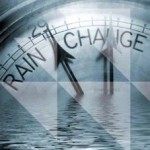Introduction
 Electricity consumption is often one of the largest sources of emissions within corporate greenhouse gas inventories, and it is therefore important to report these emissions correctly. Unfortunately, it is common for reporting companies to misreport the emissions associated with transmission and distribution (T&D) losses within their scope 2 emissions, whereas they should be reported as scope 3. This situation is not helped when trusted authorities, such as the Carbon Trust Standard, make the same mistake in the tools they provide to reporting companies.
Electricity consumption is often one of the largest sources of emissions within corporate greenhouse gas inventories, and it is therefore important to report these emissions correctly. Unfortunately, it is common for reporting companies to misreport the emissions associated with transmission and distribution (T&D) losses within their scope 2 emissions, whereas they should be reported as scope 3. This situation is not helped when trusted authorities, such as the Carbon Trust Standard, make the same mistake in the tools they provide to reporting companies.
 This article sets out how to correctly report the emissions associated with purchased electricity, and briefly notes some cases where providers of reporting/measurement guidance have got it wrong.
This article sets out how to correctly report the emissions associated with purchased electricity, and briefly notes some cases where providers of reporting/measurement guidance have got it wrong.
Published in February 2012 by Ecometrica – a company of specialists and experts in greenhouse gas (GHG) accounting, ecosystem services, climate change policy, remote sensing and web based programming – the article has been authored by senior analyst Matthew Brander and reviewed by operations director Gary Davis.
How to Correctly Report the Emissions Associated with Grid Electricity Consumption
The Greenhouse Gas Protocol: A Corporate Accounting and Reporting Standard established the widely used convention of reporting emissions by “scope”:
- Scope 1 Emissions are direct emissions from sources owned or controlled by the reporting company, e.g., emissions from company owned or operated boilers or vehicles.
- Scope 2 Emissions are from the generation of purchased electricity (or other forms of imported energy or cooling).
- Scope 3 Emissions are all the other indirect emissions which are related to the reporting company’s activities, such as the embodied emissions of purchased goods and services, business travel in third-party owned vehicles, or the emissions associated with electricity which is lost in the T&D system used for delivering purchased electricity.
So following the definition of the scopes, the emissions associated with the generation of purchased electricity that is consumed by the reporting company are reported as scope 2. In order to calculate these emissions, a “generated” electricity emission factor should be used (this shows the emissions per unit of electricity generated).
Separate from the emissions from the generation of the purchased electricity are the emissions associated with electricity which is lost from the T&D system used for delivering the purchased electricity. For reporting companies that purchase electricity from a T&D system, but do not own any part of that system, the emissions associated with T&D losses may optionally be reported under scope 3. These emissions are calculated by using a “T&D loss” emission factor.
The table below illustrates how the emissions from purchased electricity should be calculated and reported:

Things are slightly different if the reporting company owns or operates the T&D system, or generates the electricity. In cases where the reporting company purchases electricity from a power generator and transports it through a T&D system that it owns or operates, then the emissions associated with the electricity that is lost from the system should be reported as scope 2 (essentially the T&D system owner/operator is “using” the lost electricity in running the system).
Finally, for a company that generates electricity and transports it through a T&D system that it owns or operates, then the emissions associated with any T&D losses will already be captured under the company’s scope 1 emissions (from the combustion of any fuel used to generate the electricity), and should not be reported again under scope 2 or 3.
A common mistake is for reporting companies to use a “consumed” emission factor, which is essentially the sum of the “generated” factor and the “T&D loss” factor, and to report the result within scope 2 (whereas the T&D loss component should be in scope 3). This mistake can lead to unfair comparisons between reporting companies’ scope 2 emissions (if one company is reporting correctly and another company is not). T&D loss emissions can be up to 25% of generated emissions, and so including T&D loss emissions in scope 2 can skew the figures significantly.
Providers of Guidance on Greenhouse Gas Reporting/Measurement
The guidance provided by Defra in the 2011 Guidelines to Defra/DECC’s GHG Conversion Factors for Company Reporting and its Guidance on How to Measure and Report Your Greenhouse Gas Emissions largely gets things right. However, in the latter document, there is a slightly misleading footnote (footnote 41 on page 46), which says that electricity “that is lost in transmission and distribution to the end user is accounted for in the UK ‘grid rolling average’ factor”. This was true for Defra’s 2009 publication of emission factors, but subsequent publications provide separate “generated”, “losses”, and “consumed” factors, and it is only the “consumed” factor which includes both generated emissions and T&D loss emissions. The footnote may lead reporting companies to believe that T&D losses can’t be separated from “generated” emissions.













